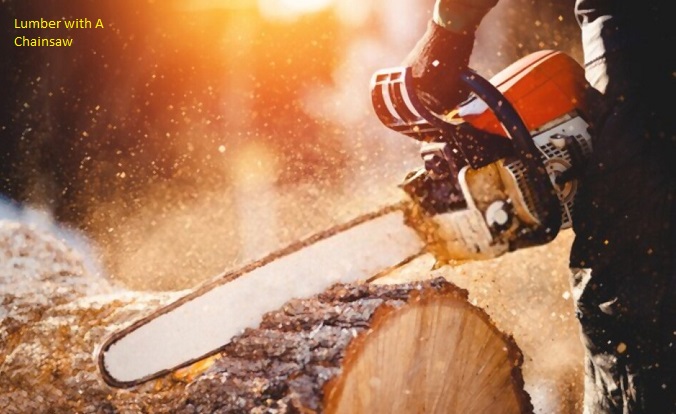Trees are an essential part of our ecosystem, providing numerous benefits such as clean air, shade, and aesthetic beauty. However, there are situations where tree roots can become problematic, leading to issues like damaging pavements, obstructing building foundations, or even affecting the health of the tree itself. In such cases, the question arises – can you cut roots with a chainsaw?
In this article, we will delve into the world of tree roots, explore the dos and don’ts of using a chainsaw for root cutting, and discuss alternative methods for root removal to preserve both trees and their surrounding environment.
Understanding Tree Roots
Before we jump into the process of root cutting, it’s crucial to understand the significance of tree roots. Roots play a pivotal role in the health and stability of a tree. They anchor the tree to the ground, absorb water and nutrients, and store energy for growth. There are two types of tree roots: fibrous roots, which are fine and responsible for nutrient absorption, and woody roots, which provide structural support to the tree.
However, certain root-related issues can arise, such as roots encroaching on buildings or causing cracks in pavements. In such cases, removing the problematic roots may be necessary.
Chainsaw Safety
Before attempting any cutting, it’s essential to prioritize safety. When using a chainsaw for root cutting, wear appropriate protective gear, including safety goggles, ear protection, and chainsaw-resistant trousers. Regular maintenance of the chainsaw, such as checking the chain tension and sharpening the chain, is crucial to ensure safe and efficient cutting.
Cutting Tree Roots: The Dos and Don’ts
Cutting tree roots with a chainsaw can be a challenging task that requires careful consideration. First and foremost, identify the roots that need to be cut, ensuring you’re not cutting critical support roots that may destabilize the tree. Use a chainsaw appropriate for the job; smaller chainsaws are ideal for minor roots, while larger ones may be necessary for thicker roots. When cutting, use proper techniques to avoid injury and ensure clean cuts that promote faster healing for the tree.
It’s vital to be cautious not to over-cut or remove an excessive number of roots, as this can lead to irreversible damage to the tree’s health.
Alternative Methods for Root Removal
For smaller roots or situations where chainsaw cutting is not feasible, alternative methods can be employed. Hand tools, such as pruning saws and root cutters, can be used for more precise and controlled cutting. Additionally, there are chemical options available, but they should be used with caution, following the manufacturer’s instructions.
For complex situations or when dealing with large trees, it’s best to seek the expertise of professional arborists who can remove roots safely and effectively.
Potential Risks and Consequences
Cutting tree roots, especially major ones, can have significant consequences. Removing critical structural roots can compromise the tree’s stability, making it prone to falling during storms or strong winds. Additionally, cutting roots too close to buildings or pavements can lead to costly damage.
Moreover, indiscriminate root cutting can disrupt the balance of nutrients and water uptake, negatively impacting the tree’s overall health.
Tips for Preventing Root Problems
Prevention is always better than cure when it comes to tree roots. Proper tree planting techniques, including choosing the right tree for the right location, can prevent root-related problems in the future. Regular tree maintenance, such as pruning and mulching, can also help promote healthy root growth and minimize potential issues.
Case Studies
To better understand the outcomes of root cutting, let’s look at some case studies. In one scenario, a tree with encroaching roots was carefully pruned, allowing it to coexist with the surrounding structures safely. Conversely, in another case, improper cutting of major roots led to the tree’s decline and eventual removal. These examples highlight the importance of informed decision-making when dealing with tree roots.
Frequently Asked Questions (FAQs)
Can cutting roots harm a tree?
Cutting roots can harm a tree if done improperly or if critical support roots are removed. It can lead to instability and a decline in the tree’s health.
What happens if you cut major tree roots?
Cutting major tree roots can destabilize the tree, making it susceptible to falling. It may also result in the tree’s decline and eventual death.
Can I use a regular chainsaw for root cutting?
Yes, a regular chainsaw can be used for cutting small roots. However, for larger roots, a more powerful chainsaw may be necessary.
Are there legal restrictions on cutting tree roots?
Yes, in some areas, there may be legal restrictions on cutting tree roots, especially if it involves protected or endangered tree species.
How much does professional root cutting cost?
The cost of professional root cutting varies depending on the complexity of the job and the location. It’s best to obtain quotes from reputable arborists.
Conclusion
Cutting tree roots with a chainsaw is possible, but it should be approached with caution and proper knowledge. Identifying the right roots to cut, using the appropriate equipment, and following safety guidelines are essential for a successful outcome.
Alternatively, if root cutting seems too risky or complex, exploring alternative methods or seeking professional assistance can help preserve both trees and their surroundings. Remember, preserving the health of trees should always be a priority, as they are invaluable contributors to our environment and well-being.



